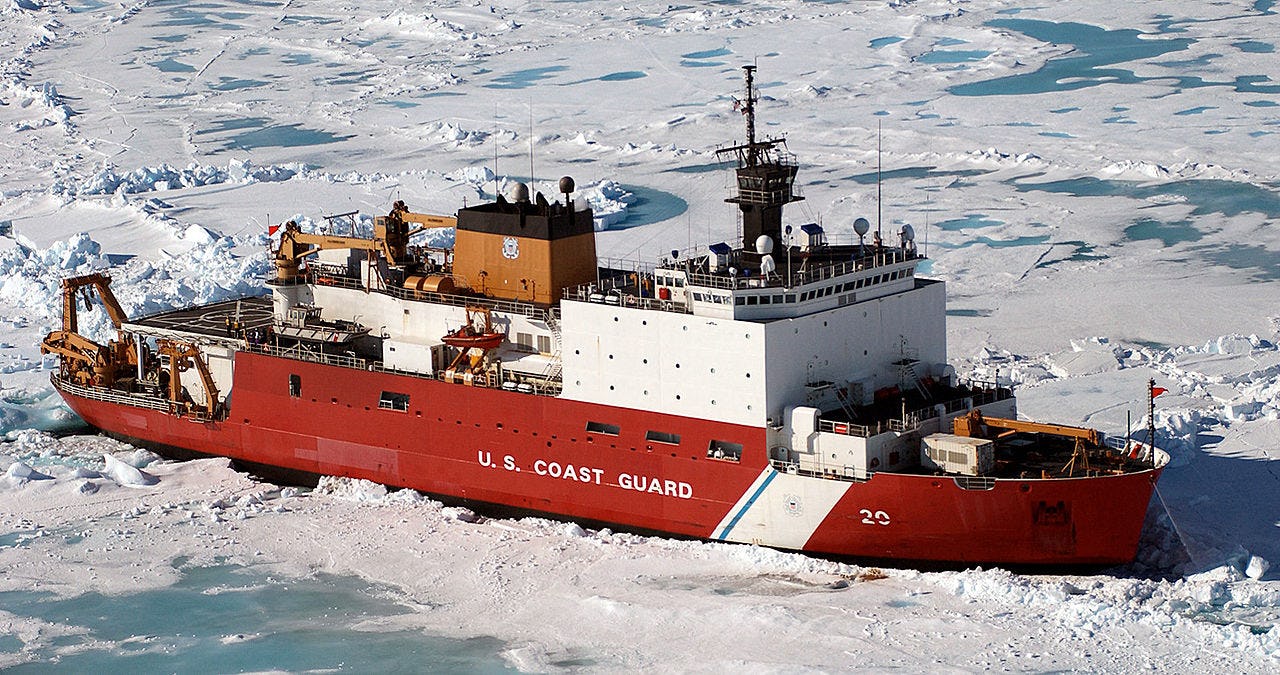America is Not (Yet) an Arctic Nation

U.S. Coast Guard Cutter Healy sits approximately 100 miles north of Barrow, Alaska, in order to conduct scientific ice research. Photo: United States Coast Guard
A lot has changed since the United States has last held the Chairmanship of the Arctic Council in 1998. What was once seen as a closed theater of the Cold War has been transformed into a global hot spot for scientific research, resource development, and economic potential. The effects of climate change have unearthed opportunities and challenges for not only the eight Arctic nations, but also countries and activist groups across the globe that are concerned and enticed by the melting pole.
One thing, however, has remained relatively constant: the American public still sees its northern territory as remote, and the Arctic region in general as an uninhabited wilderness of glaciers, snow, and polar bears on icebergs.
Four million people live in the Arctic – a far cry from the barren white landscape photographs that accompany news reports and policy memos. The history of humans in the Arctic, dating back over twenty thousand years, is woven not just from the development of unique languages, values, and traditions of its residents but also of legal battles, economic growth, and trials of varying public governance structures. It is a history of anything but a tabula rasa.
In April, the United States will again take over the Arctic Council chairmanship. In a recent article, Admiral Robert J Papp, Jr., the first U.S. Special Representative of the Arctic, outlined his priorities for the next two years: Arctic Ocean safety, security, and stewardship; economic and living conditions of Arctic communities; and climate change mitigation and adaptation.
Addressing human safety, community development, and climate concerns are all profound and urgent issues that must be addressed. But as an Arctic nation, America’s obligation goes beyond using its human, financial, and scientific resources to help the region adapt to and mitigate environmental shifts. It must also educate its residents in the lower 49 on what being an “Arctic Nation” means.
Moving beyond a tradition heavy in science, security, and economy, the U.S. should use its chairmanship as an opportunity to invest in education of the Arctic and cultural exchange between its northern and southern citizenry.
Today, the Arctic largely exists within the education curriculum as a science, focusing on the geophysical and climate change. But there too exists a human story of the Arctic – as Papp defines it, “a story of adaptation and survival” in some of the harshest conditions on earth. While this human story has been largely overlooked, the next two years provide a chance for education policymakers to provide recourses for teachers to bring an awareness and understanding of an inhabited Arctic to their students. Lesson plans could include art, music, and literature; the value of traditional knowledge; the history of development and native rights; and current issues like public health facing Alaskan communities.
Educational opportunities have the potential to also thrive outside the classroom through cultural exchange programs. The Fulbright Arctic Initiative is a new program that will bring together scholars, professionals, and applied researchers from Arctic nations to work on collaborative projects. Through exchanges to the Arctic, grantees will engage in research on energy, water, health, and infrastructure issues. Admiral Papp should encourage the creation of more opportunities like Fulbright for exchanges between youth and professionals in the Arctic and contiguous U.S. Programs that foster understanding and collaboration between Arctic and non-Arctic residents can help to close the gap between America’s north and south while dismantling the perception of the Arctic as a remote part of American territory and identity.
Museum exhibits and festivals provide an alternative way to reach a broader audience. While the Arctic Council’s responsibilities reside within the Department of State, Admiral Papp could support the Smithsonian Institution in producing Arctic traveling exhibitions and community programming across the country. Exhibits could use resources from museums within the Institute, like the National Museum of the American Indian and the Smithsonian American Art Museum. The Smithsonian Folklife Festival, an annual event held for two weeks each July on the National Mall, is a great opportunity to bring the Arctic to the rest of the country. The festival chooses a particular nation or region for an educational presentation through art, dance, storytelling, music, and food, and draws over a million visitors every year.
By reinforcing the inclusion of the Arctic in national education curricula, buttressing exchanges that foster lasting relationships between the north and south, and supporting Arctic festivals and exhibits, the U.S. could use its chairmanship to offer the average American a better understanding of their 49th state.
After attending the Arctic Circle Assembly in Reykjavik, Iceland, Admiral Papp realized “that we are all connected through the Arctic, whether environmentally, through the global impacts of climate change; economically through international trade; or scientifically through multi-national research initiatives.” But if America is to truly become the “Arctic Nation” it boasts to be, we must also be humanly connected through the culture and identity of our fellow citizens that call the Arctic home.